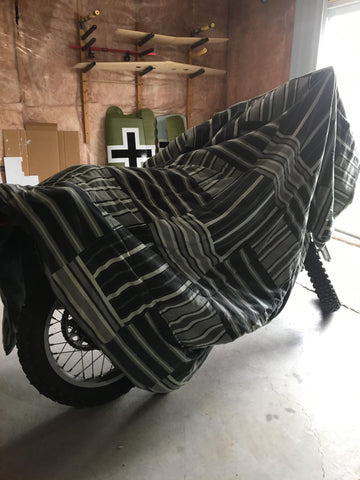
Preparing for Storage
So the time has come for you and your toys, where and how do you put them to rest for a season? What recommendations do you follow, have you ever put any thought into why you do it that way? Here is my take on how and why you should do storage in the manner I will try to explain.
Fuel Stabilizer
Steel tank bikes should have the fuel tank filled to the top to help reduce the chances of the tank having condensation buildup and begin the process of oxidization inside your fuel tank. While Plastic fuel tanks are best to be stored empty, so drain that fuel out, put it in the lawn mower, the snowblower, or even in the car if it's not pre-mix, simply use it up and keep fresh fuel for the bike in the spring. If your bike is fuel injected you will need to keep the tank full and the fuel system charged, pressurized to keep it at its best. Any remaining fuel should have some fuel stabilizer put in it to help hold it from going stale over the winter months.
Drain Fuel bowl
If you ride a bike that still has a carburettor on it, it is the best practice to drain the fuel bowl from the bottom of the bowl. First, this removes all the fuel that could contaminate your system, second, it also will allow any small particles of crud that made it past your fuel filters to be removed as well. The old school of thought was to keep fuel bowls full and charged at all times to help keep gaskets moist and prevent the chance of leaks, with today's modern gaskets and o-rings that is less of a concern, yet ethanol contamination is more prevalent. The fuels that we have available to us are susceptible to contamination and residue. If you have ever had the chance to look at the inside of a carb that has been stored for any length of time you will see what I am referring to.
Change Oil
Used oil, even slightly will start to change properties and can have an acidic nature to it. This means you have your internal engine bearing sitting in contaminated oil and could under the right circumstances harm your internal components. Take the time to drain out the old oil and put in fresh at the end of the season, small bikes only use a couple of litres while larger street bikes use upwards of 4L, that's only 30-$60 worth of oil and in the long run, can save you thousands in engine rebuilds.
Battery Tender
Keep it topped up; a good tender will put a constant trickle to the battery and keep it warm enough to prevent any chance of freezing. Lithium batteries generally require a different charger then a lead acid one does. Optimate make a fantastic product that has been trusted for many years and is available as a smart charger that will predetermine what type of charge is required, either traditional lead acid or a lithium-ion charge. One of the worst things you can do for your bikes charging system is to start it up for a few minutes every month. You need to SET IT AND FORGET IT.
Wash
Don't forget to give it a good wash and get all that old dirt off of it before it turns to cement on you. But keep in mind practices of using a pressure washer are NOT RECOMMENDED (we will get into that in another post). Now would also be a good time to give it a good once over for greasing, and maybe put some wax or spray with a can of SC1 to help any moisture bead off that may get onto it over the winter.
Cover and Lift
Get those tires off the concrete as concrete can pull the oils out of the rubber and will cause your tires to prematurely dry rot, forcing you to get new tires before you have worn them out.
A cover is to merely keep the dust off, keep any prying eyes off, and may also help keep any damage from occurring over the winter from something, or someone accidentally falling onto, into, or banging your pride and joy.
Or you can tuck your baby away in the basement like this old girl gets. Now that's some special treatment.

Fogging Cylinder
If you are going to be storing the bike for a more extended period then a few months over the winter, this may be a practice you want to consider. This is an old-school technique that for most modern bikes does not apply. As most modern bikes have cylinders that are coated, they have fewer tendencies to rust, but there is still potential over extended periods of time. This practice of fogging an engine will most likely cause you to require new spark plugs in the future. What this does is coat your entire cylinder wall and combustion chamber with a thin coating of oil thereby helping reduce any chance of internal oxidization.
You could also just leave it outside to let the weather get on it, just in case you find a good riding day.


